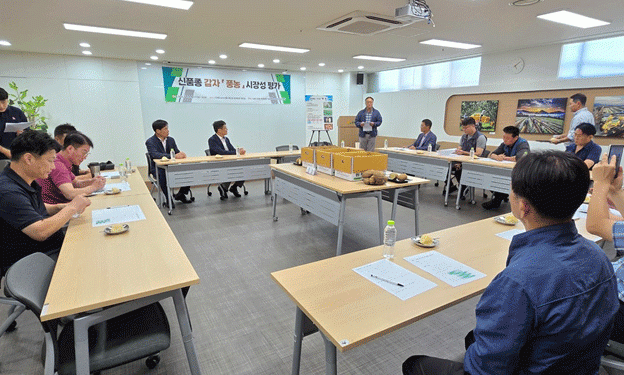The introduction of a new potato variety named “Pungnong” by the Gangwon Provincial Agricultural Technology Institute has generated excitement among agricultural professionals and market stakeholders. Unveiled at a recent market evaluation event in Seoul, Pungnong is being positioned as a potential contender against the well-established Sumi variety, which has dominated the South Korean potato market for decades.
Pungnong aims to address the challenges posed by climate change while providing a high-yield, versatile crop for farmers and processors. It has shown promise in both yield and processing convenience, making it an attractive option for food service and industrial applications. The unveiling event was organized by the Rural Development Administration and the Gangwon Provincial Agricultural Technology Institute, highlighting its significance in bolstering the local potato industry.
Pungnong: A Competitive Advantage
Sumi, introduced to South Korea in 1978, accounts for over 80% of domestic potato production. While it is known for its high moisture content and waxy texture, Pungnong presents a distinct alternative. Developed through the artificial crossbreeding of the Daeseo and Geumseo varieties, Pungnong has been specifically cultivated to withstand climate-related stresses and has demonstrated superior productivity.
During the recent evaluation, it was noted that Pungnong exhibits better resistance to climate fluctuations than both Sumi and the Orion-developed Dubaek variety. Additionally, Pungnong yields 30% more potatoes than Sumi, providing a significant advantage in terms of productivity. The name “Pungnong” is derived from its high yield potential, reflecting its promise as a profitable option for farmers.
Market Potential and Consumer Preferences
Market analysts and distributors attending the event acknowledged the favorable characteristics of Pungnong, particularly its large tuber size and ease of processing. According to research conducted on trial farms in Wonju and Samcheok, Pungnong produces larger potatoes in the 150-200g and 200-280g weight categories, which are critical for processing and food service.
Researcher Song Yun-ho stated that Pungnong’s appeal lies not only in its size but also in its texture and flavor profile. Feedback from consumer tests has indicated that Pungnong’s taste and long-term storage capability make it an excellent candidate for various food applications. The potato’s appearance features shallow eyes, enhancing its processing convenience and differentiating it from the round shapes of Sumi and Dubaek.
Challenges and Market Strategy
Despite its advantages, there are challenges that Pungnong must overcome to gain market share. Market auctioneer Kim Bu-yong pointed out that consumer familiarity with round potatoes may pose an initial barrier to acceptance. Therefore, targeting food service companies for ingredient supply may be more advantageous in the short term than aiming for direct household consumption.
Concerns were also raised about the need for careful sorting during the distribution process, as the elongated shape of Pungnong may complicate shipping and storage. Auctioneer Yi Yong-ho emphasized the importance of maintaining uniform sizes to secure competitive pricing in the market.
To enhance its market presence, experts suggest that Pungnong should be marketed with an appealing brand name and supported by promotional strategies such as recipe development and attractive packaging designs. By differentiating its products in a crowded market, Pungnong could establish a niche as a preferred potato for food service applications.
Pungnong has the potential to disrupt the South Korean potato market, especially if it can leverage its advantages in yield, processing convenience, and taste. As it competes against established varieties like Sumi and Dubaek, successful marketing strategies and a focus on addressing consumer preferences will be crucial. The journey of Pungnong in the marketplace will not only impact the livelihoods of local farmers but also contribute to the resilience and sustainability of the South Korean agricultural sector.

